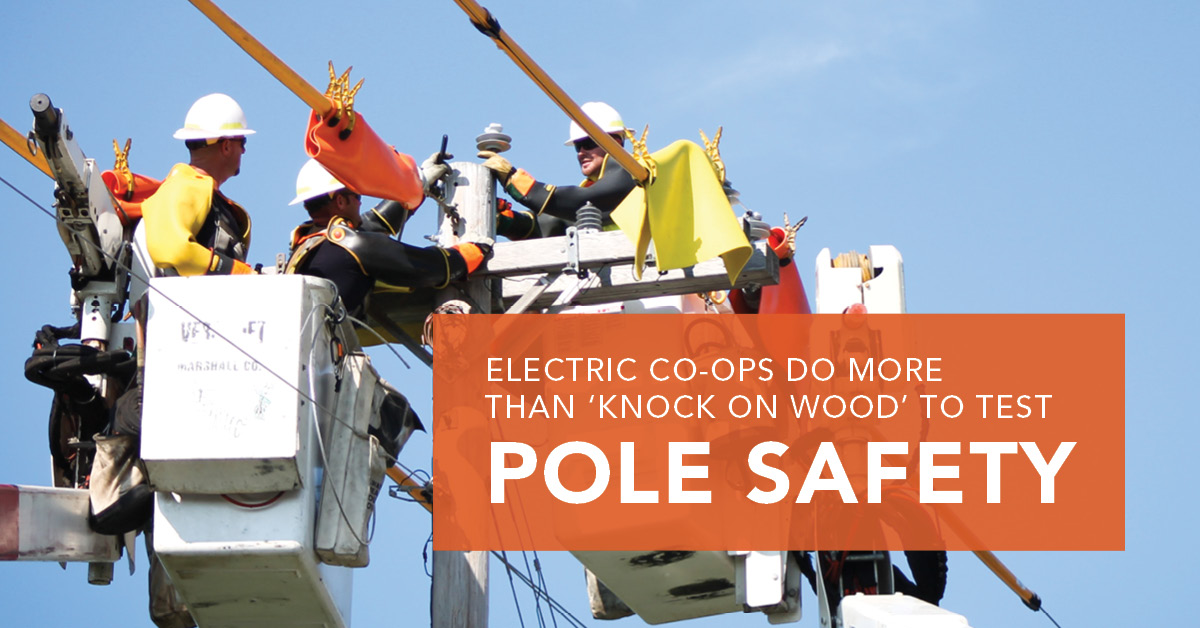
To provide safe, reliable electrical service from overhead power lines, your electric cooperative starts on the ground: in the right-of-way under and around the co-op’s miles of power lines. Maintenance activities involve mowing, cutting dangerous trees, pruning, applying herbicide and removing trees.
“Great electric service is delicate balancing act between a safe and reliable power grid and the wishes of property owners when it comes to trees and other vegetation,” said John Gasstrom, CEO of Indiana Electric Cooperatives. “Fortunately, most consumers are cooperative when trimming crews come around every few years to maintain the power line right-of-way that crosses their property. They understand untrimmed trees and overgrown vegetation can affect their electric service and prolong outages after storms.”
A right-of-way is a type of easement or agreement with property owners that grants the electric cooperative the right to manage small portions of that property for the purpose of maintaining power lines that bring the electricity to your home, farm and/or business, and those of your neighbors. Having right-of-way means utilities can access the area to fix a utility-related problem or to perform maintenance.
Generally, the most common cause for power outages and for blinking lights is trees that make contact with power lines. Limbs that touch power lines can become energized or even break and fall, bringing the lines down with them. Trees too close to power lines can also be deadly to you and your children.
Right-of-way programs trim, control and, if necessary, remove trees and other vegetation around 10 to 15 feet on either side of the center line of electric lines. Branches growing through or around utility lines are also trimmed away or removed. Utilities also remove branches growing above lines, where snow or ice could cause branches to sag or fall onto live lines. It is sometimes necessary to target and remove entire trees. These include trees that might be off the easement that are weak, diseased, dead, dying, severely leaning or growing in a direction that could damage the power line should they fall.
Electric cooperatives serve the most rural, wooded and challenging stretches of terrain in Indiana that are also the most green. A good right-of-way maintenance plan by the co-op helps ensure less damage and shorter outages when Mother Nature brings strong winds and ice.
Other rights-of-way
Not all power lines are overhead. Underground lines, transformers, pole bottoms and meters also have a right-of-way and need a clear space around them.
For instance, if crews need to repair underground wiring, the first thing line technicians do is open the big green boxes out at the street. If a homeowner plants shrubs too close, they’ll be cut. Inside that green box, or padmount transformer, line technicians deal with several thousand volts of electricity right at their fingertips and need room to operate.
Poles are routinely inspected and treated for decay prevention at ground level. If plants are in the way, they’ll also be removed.
Plant the right tree in the right spot
We all enjoy trees, but when they interfere with power lines, reliability and safety are compromised. That’s why it’s important that for trees and power lines to coexist, care should be taken in the planning where trees will go when power lines are nearby and purchasing the right tree so that it can grow to maturity without interfering with the existing power line. Here are some precautions when planting a tree:
- Before you dig, call 811, the underground utility locator service, to mark the location of underground utilities so accidental contact, damage and injuries can be avoided.
- Choose trees that will grow no higher than 25 feet when planting near power lines. Plant larger trees more than 40-60 feet away from power lines.
- Do not plant near underground utility services. Tree roots can grow and interfere with underground pipes, cables and wires. Future repairs to these facilities also could damage the health and beauty of nearby plants and trees.
- Pick the right spot. Don’t plant trees, shrubs, plants or other vegetation where they can damage electrical equipment or interfere with your electric co-op’s ability to access it.
- Ask your electric cooperative to come trim your tree if it begins growing near power lines; don’t risk your safety doing it yourself.





